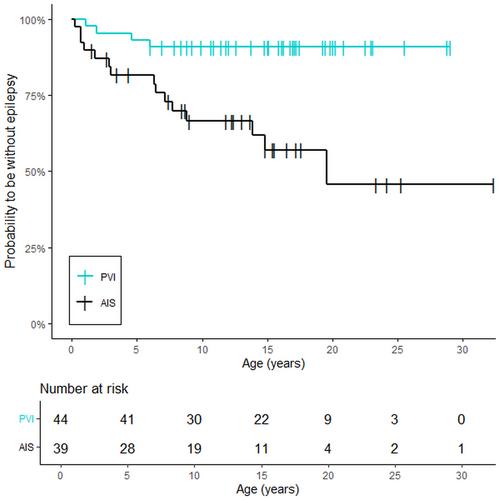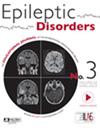Vascular syndrome predicts the development and course of epilepsy after perinatal stroke
Abstract
Objective
Epilepsy develops in one third of the patients after perinatal stroke. It is still unclear which vascular syndrome of ischemic stroke carries higher risk of epilepsy. The aim of the current study was to evaluate the risk of epilepsy according to the vascular syndrome of perinatal stroke.
Methods
The study included 39 children with perinatal arterial ischemic stroke (13 with anterior or posterior trunk of the distal middle cerebral artery occlusion, 23 with proximal or distal M1 middle cerebral artery occlusion and three with lenticulostriate arteria infarction), and 44 children with presumed perinatal venous infarction. Magnetic resonance imaging obtained at the chronic stage was used to evaluate the vascular syndrome of stroke.
Results
The median follow-up time was 15.1 years (95% CI: 12.4–16.5 years), epilepsy developed in 19/83 (22.9%) patients. The cumulative probability to be without epilepsy at 15 years was 75.4% (95% CI: 65.8–86.4). The probability of having epilepsy was higher in the group of proximal or distal M1 artery occlusion compared to patients with periventricular venous infarction (HR 7.2, 95% CI: 2.5–26, p = .0007). Patients with periventricular venous infarction had significantly more often status epilepticus or spike–wave activation in sleep ≥85% of it compared to patients with anterior or posterior trunk of the distal middle cerebral artery occlusion (OR = 81; 95% CI: 1.3–5046, p = .029).
Significance
The emphasis of this study is placed on classifying the vascular syndrome of perinatal stroke and on the targeted follow-up of patients for epilepsy until young adulthood. The risk for having epilepsy after perinatal stroke is the highest in children with proximal or distal M1 middle cerebral artery occlusion. Patients with periventricular venous infarction have a more severe course of epilepsy.


 求助内容:
求助内容: 应助结果提醒方式:
应助结果提醒方式:


